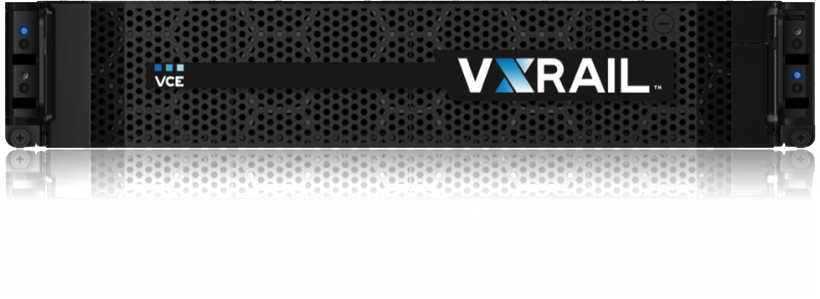
EMC and VMware have revealed the VCE VxRail Appliance family, a hyper-converged appliance that can bring the central data centre to remote branch offices.
The collaboration between the three companies has created what is the first venture into hyper-converged appliances for VCE, which has typically focused on block systems.
Speaking to CBR, Nigel Moulton, CTO, VCE said that the appliance would "dramatically improve market reach," and that "EMC and VMware channel partners hoped to adopt aggressively."
Choosing VMware as part of the software stack came about as VCE saw it as one of the world leaders in virtualisation. While there will be a very tight integration, VMware will focus on the software and not interfere with the hardware.
What this means is that the VxRail will offer VMware vCentre server virtualisation, vSphere Hypervisor and Virtual SAN pre-loaded onto the appliance.
The appliance will be offered by VCE in six different models that are different by the core count. The entry-level offering is the VxRail 60 which will be four-nodes with six-cores per node with 64GB RAM and 3.6TB per node.
The top of the range is VxRail 280, offering an 112-core, 2TB RAM and 76.8TB SSD storage that is composed of four nodes.
Entry systems for SME’s and remote office start at a list price of $60,000.
Remote offices are highlighted as typical use cases for the appliance, with Moulton saying that he expects mid-market companies to adopt as it is not as costly as a full stack.
VxRail appliances will be integrated with EMC mission-critical data services which include replication, backup and cloud tiering, while EMC RecoverPoint provides per-VM replication and automated disaster recovery for critical workloads.
The appliance will also use EMC’s cloud tiering so that it can extend to over 20 public clouds including VMware’s vCloud Air, AWS, Microsoft Azure and according to the release Virtustream – very shortly.
On the same day as the big EMC/VMware/VCE hyper-converged announcement, Nutanix chose to reveal updates to its own hyper-converged stack.
Version 4.6 comes out with the main selling point of invisible operations, choice and simplicity. Essentially it is letting customers pick the best cloud or virtualisation platform for the business needs, with the user not having to worry about the underlying hypervisor.
The update is offering 1-click Hypervisor Conversion which will allow users to switch the hypervisor running on a Nutanix system from VMware vSphere to the built-in Acropolis Hypervisor in an automatic operation.
Cross-hypervisor disaster recovery and backup is also being offered, which will enable businesses to quickly recover from a site failure by failing over VMs from one site to another location run on a different hypervisor.
Additional capabilities have been added with machine intelligence that will help to automate the management operations of the infrastructure.
The company said that the update will deliver up to 4x price/performance gains on existing investments, it can deliver $0.35/IOPS which according to the company is better than top-selling all-flash arrays which also suffer from management and additional networking problems.
This update will be free for current Nutanix customers and is immediately available.


